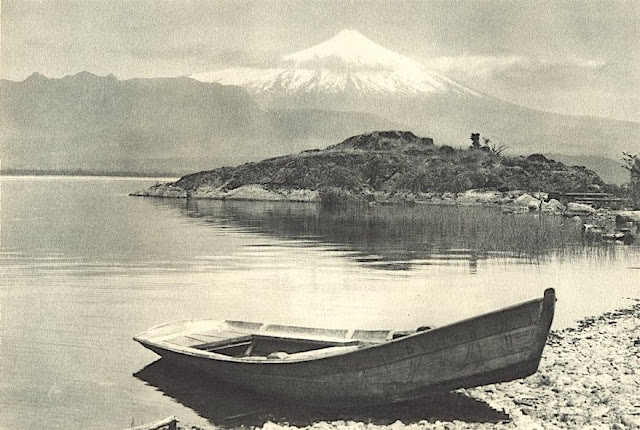Piz Roseg (3,937 m -12,917 ft)
Switzerland - Italy border
In Piz Roseg and the Sellagruppe as seen from Fuorcla-Surlej, Graubunden, Switzerland. oil on canvas, 82 x 62cm, 1934, Courtesy John Mitchell Gallery
The mountain
Piz Roseg (3,937 m -12,917 ft) is a mountain of the Bernina Range, overlooking the Val Roseg in the Swiss canton of Graubünden.There are two summits on its main ridge:
- the south-east and higher summit (3,937 m)
- the north-west summit, known as the Schneekuppe (3,920 m). There is also a prominent top on the east-north-east ridge, called the Roseg Pitschen (3,868 m) (Italian border).
The first ascent of the mountain to the Schneekuppe was by F. T. Bircham with guides Peter Jenny and Alexander Fleury on 31 August 1863. The highest point of the mountain was reached two years later by A. W. Moore and Horace Walker with guide Jakob Anderegg on 28 June 1865.
Piz Roseg is separated from the neighbouring Piz Scerscen by the Porta da Roseg (3,522 m), also called the Güssfeldtsattel. The Swiss side of this col – a steep ice slope of up to 70° – was first climbed by Paul Güssfeldt, with guides Hans Grass, Peter Jenny and Caspar Capat on 13 September 1872. Grass and Capat had spent the previous day cutting steps up the first two-fifths of the route. The following day they added at least another 450 steps on the first ascent.
The 700-metre north-east face of Piz Roseg was first climbed by Christian Klucker and L. Norman-Neruda on 16 July 1890; the face – with a notable serac band halfway up – sports a number of difficult routes. Klucker, together with M. Barberia, also made the first traverse from the Italian side of the Porta da Roseg on 21 June 1898.
The artist
Schütz is a academic Swiss painter, born in the Netherlands. He comes from a family of artists. He is reknown for having painted the Swiss and Italian Alps mountains. No biographical details are avalaible about him, even if his works appears quite often in auctions.
___________________________________________
2021- Wandering Vertexes...
by Francis Rousseau








